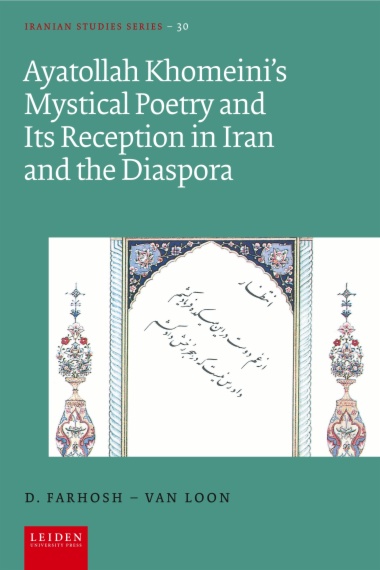There are many publications dealing with the political career of Ruhollah Khomeini (1902–1989), who transformed the political landscape of Iran and the Middle East after the Islamic Revolution of 1979. Most of the research conducted in the West is on Khomeini’s political strategies, while the influential role of mysticism in all facets of his life is ignored. This book is the first study examining Khomeini’s poetry, mysticism and the reception of his poetry both in Iran and the West. It investigates how Khomeini integrated various doctrines and ideas of Islamic mysticism and Shiiism such as the Perfect Man into his poetry.
- Cover
- Table of Contents
- Acknowledgments
- Notes on Translations, Transliterations and Footnotes
- Introduction
- Chapter 1. The Clergy’s Role in Politics
- Iran’s Socio-Political Situation under the Qajar Dynasty (1785-1925)
- Clergy-State Relations during the Qajar Period
- The Role of the Clergy during the Constitutional Revolution (1905-1911)
- The Clerical Response to Constitutionalism
- The Rise of Reza Shah and the Curtailment of the Clergy’s Role
- The Clergy’s Response to Reza Shah’s Modernisation Policies
- The Clergy under Mohammad Reza Shah
- Rise of Ayatollah Khomeini
- Chapter 2. Ayatollah Khomeini’s Inner World: Mysticism and Poetry
- Ayatollah Khomeini’s Mysticism
- Studies of Ayatollah Khomeini’s Mysticism
- The Role of Mysticism in Ayatollah Khomeini’s Life
- Western Studies on Ayatollah Khomeini’s Poetical Work
- The Role of Poets and Poetry in Persian Society
- Ayatollah Khomeini’s Poetry
- Chapter 3. Ayatollah Khomeini, the Topical Poet and his Quatrains (robâʿis)
- Robâʿis in Historical Perspective
- Structure of the Persian Robâʿi
- Robâʿis by Ayatollah Khomeini
- Biographical Elements: A Dialogue with Ayatollah Khomeini’s Daughter-in-Law
- Mystical Love
- The Iran-Iraq War
- Martyrdom and Shiism
- The Mystic Mansur Hallâj
- The Kaʿba, the Holy House of God Despised
- Conclusion
- Chapter 4. Ayatollah Khomeini as an Antinomian Poet: Lyrical Poems (ghazals)
- Structure of the Ghazal
- Themes and Motifs in the Ghazal
- The Ghazal in Historical Perspective
- Ayatollah Khomeini’s Poetry Inspired by Hâfez
- Ayatollah Khomeini’s Imitation of the Ghazal
- Antinomian Elements in Ayatollah Khomeini’s Ghazals
- Censure of the House of God in Mecca in Ayatollah Khomeini’s Ghazals
- Conclusion
- Chapter 5. Ayatollah Khomeini, the Shiite Philosopher and his Panegyric Poems (qasides)
- The Qaside in Historical Perspective
- Ayatollah Khomeini’s Qasides
- The Concept of the Mohammadan Light
- Veiling and Mystical Unveiling
- Mohammad al-Mahdi, The twelfth Shiite Imam
- Rejection of the Monarchy
- Mahdi’s Representative on Earth: A Predecessor to Velâyat-e Faqih
- Spiritual Perfection and Leadership
- Anti-British Tendencies in Ayatollah Khomeini’s Qasides
- The Shiite Interpretation of Oppression
- Islamic Governance
- Conclusion
- Chapter 6. Reception of Ayatollah Khomeini’s Poetry in Iran and Abroad
- Responses of Followers to Ayatollah Khomeini’s Poetry
- Responses to Ayatollah Khomeini’s Poetry in the Diaspora
- Conclusion
- General Conclusion
- Notes
- Bibliography
- Index

